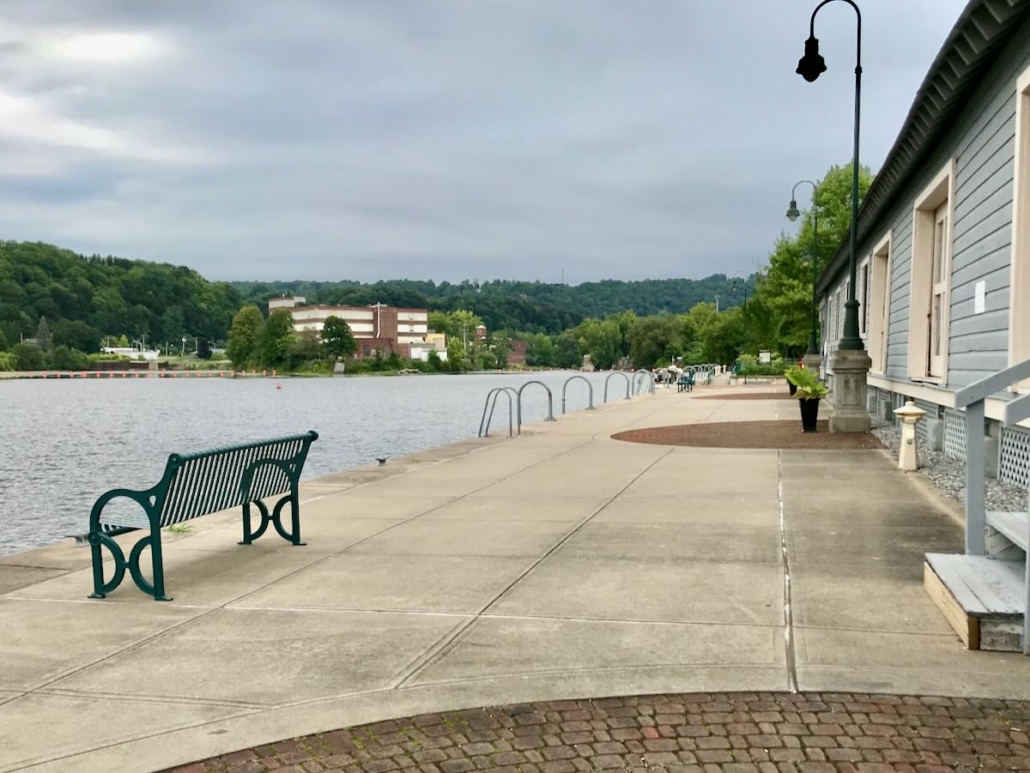Rotary Park
Written and narrated by Camille Johnson, Cooperstown Museum Studies Graduate Program, SUNY Oneonta, Researched in 2023.
Little Falls, like most cities and towns built along New York’s rivers, relies heavily on their waters.
Without the Mohawk River, the history of Little Falls would have been drastically different. The Mohawk River is the largest tributary of the Hudson, flowing over 149 miles, and going straight through Little Falls. It is now a part of the Erie Canal system, which is full of modified rivers and tributaries for easy and safe passage between the Great Lakes far to the interior of the United States, and the Atlantic Ocean. Little Falls got its name from the fact that it sits on a section of the Mohawk River with a series of drops and rapids. The rapids stretch for about a mile and drop down a total of 40 feet. For this reason, travelling down this stretch of the river was extremely difficult. Trading boats were too heavy to be taken out of the water and carried down to the end of the rapids, as used to be done with smaller boats. Building a lock system along the Mohawk, and in Little Falls specifically, helped to alleviate the problem.
The formation of the Mohawk River happened about 13,500 years ago when the Glacial Lake Iroquois began to melt.
Over time, it deposited a large amount of water into the Mohawk Valley. Like the formation of potholes on roads, similar potholes called “scours”, formed along the path the new river flowed, especially at the base of the falls. Some of those scours can be seen on nearby Moss Island, which sits in the Mohawk River in eastern Little Falls, and is a popular rock-climbing destination.
If you look to your right, further downstream from here, you can see another island, Hansen Island. In the late 19th and early 20th centuries, Christian Hansen Laboratories opened a factory producing cultures and enzymes for cheesemaking. However, before the factory was built, Hansen Island sat surprisingly vacant of much of the common vegetation of the area due to its low elevation above the water. The Mohawk River is prone to flooding, and the island would get routinely swallowed by the water and washed clean. In 1831, water usage rights were loosened, and Little Falls began to develop as a manufacturing center. Factories lined the riverbanks on either side of the Mohawk and made use of the hydropower that the river provided. Without the ability to harvest that kind of power, Little Falls would have never become the manufacturing powerhouse that it was once known for.
The Mohawk Valley, where Little Falls sits, has been occupied by indigenous groups like the Mohawk Nation of the Haudenosaunee Confederacy for hundreds of years before colonial contact.
They used the river as a mode of travel, a source of food, and still consider it an important resource. The river has been an important part of culture and trade for the people of the Mohawk Nation, and as European settlers and colonists began to populate the area, it remained so for them. German Palatines were some of the first non-native settlers of the Little Falls area and found themselves competing with indigenous groups for jobs helping travelers portage their canoes and boats over the intimidating falls. This early conflict shows that settlement in the area was not without tension. Problems between the Mohawk Nation, European settlers, and American colonists have always existed. The Mohawk River has been important to the survival of those that lived there and for access to the abundant resources the river can provide.




